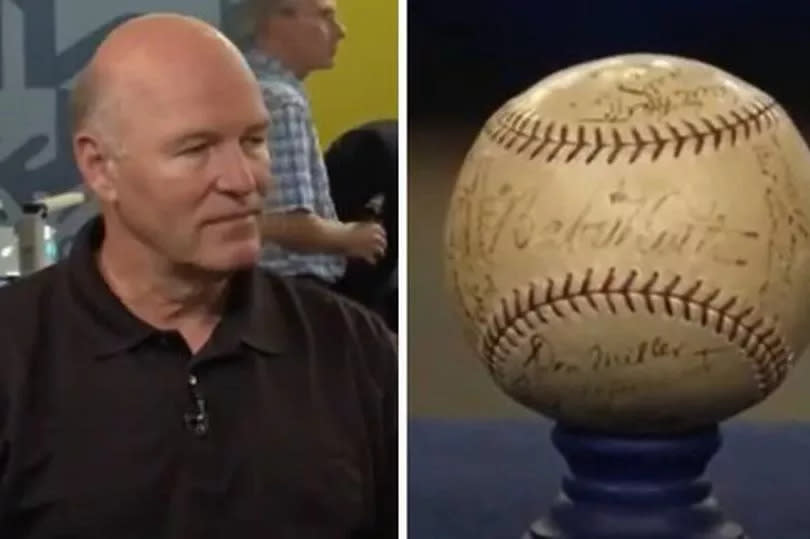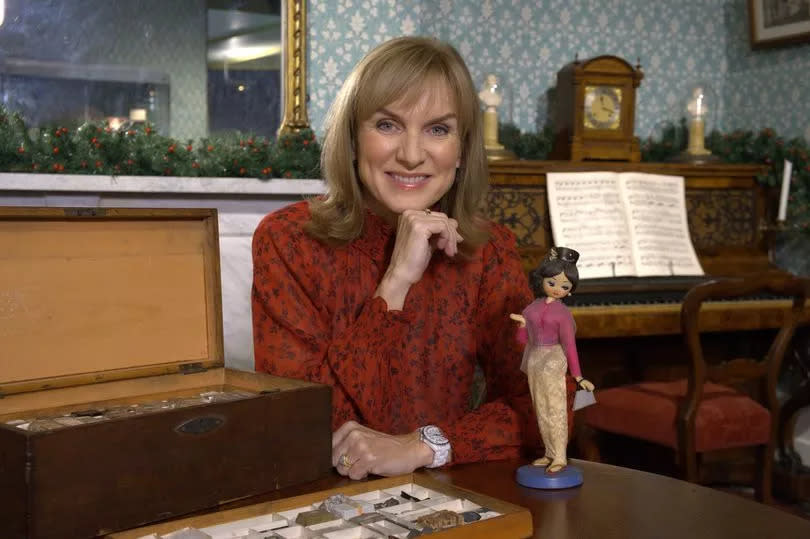Antiques Roadshow guest’s dad kept baseball worth a small fortune in ‘sock drawer’

A guest appeared on Antiques Roadshow in the US, bringing with him two baseballs he had inherited from his father, one of which stunned appraisal expert Philip Weiss.
In the show, based on the UK version that is hosted by Fiona Bruce, Philip chatted with the visitor who revealed the curious backstory of the balls. He shared: "Well my dad loved baseball, how he got these balls, I don't have any idea but when he passed away, we the siblings were kind of divvying up his things, the balls were there and I said I'd take them."
The guest also disclosed the fairly common place storage of the potentially valuable items, stating: "Oh they were in a sock drawer, a dresser drawer and I didn't think they were much of anything."
Philip then intrigued viewers by teasing: "Well let's just say this is going to be a tale of two baseballs."
Directing attention to the details of the first baseball he said: "The first baseball here on the right is really interesting, because you see there's Babe Ruth right here on the sweet spot," reports the Express. "And then when you flip it over to this side, right here, you have Lou Gehrig and then when you flip it over again, you have what I call the key signature."
"Joe Girardi was the key signature as he only played on the Yankees for one year and by having him on the baseball, we're able to identify this as a 1927 Yankee baseball."
Philip then said: "The 1927 Yankees is arguably the best team in baseball history and obviously people will argue that but I personally think that could be true."
He then discussed the second baseball, a circa 1950s Milwaukee Braves ball, supposedly signed by legends like Henry Aaron and other Hall of Famers, but revealed the disappointing truth: "Sadly, that ball is a stamp ball, not a signed ball."
He explained the importance of such discoveries on the show: "I'm glad you brought it in, because at the Roadshow, we see an enormous amount of stamp baseballs and it's a good kind of tool for us to show a stamp baseball at an appraisal like this. So people can realise what things to look for and find out that it's stamped."
He pointed out tell-tale signs of a stamp ball: "One of the key things you look for in a stamp ball is very often you see the signature going off into the stitching. You can't sign a baseball like that with a signature going off into the stitching." He continued to explain the differences: "What happens is that it would be stamped onto the ball itself and they would fold it up and stitch it that way."

He noted that while the second ball was worth no more than $100, it was the first baseball that truly captured his attention. He said: "This is a really, really good example of a 1927 Yankee baseball."
"It does have some wear on some of the panels but you have a fairly good Ruth signature and a really strong Gehrig signature."
"I'll give you a conservative auction estimate. I would expect it to sell in the $15,000 to $25,000 range. It could be more. Balls like this have sold for $40,000 to $50,000 but based on the condition, I think that's a fair range to do it."
Upon hearing this, the guest's reaction was minimal: "Wow. A good spot for a sock drawer."
"Did you have it in the sock or was it just rolling around? " Philip asked. "No, probably just rolling around," replied the guest, prompting Philip to say: "Well, it's a nice sock drawer find and a good story about two baseballs."


